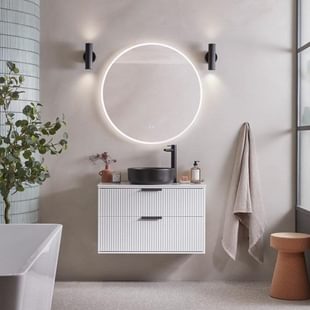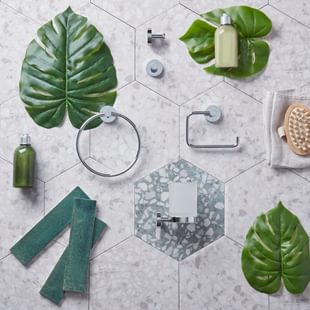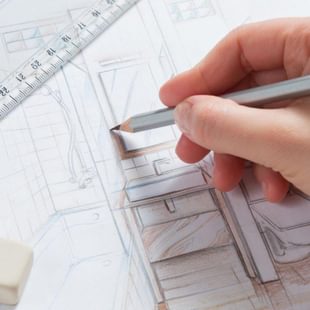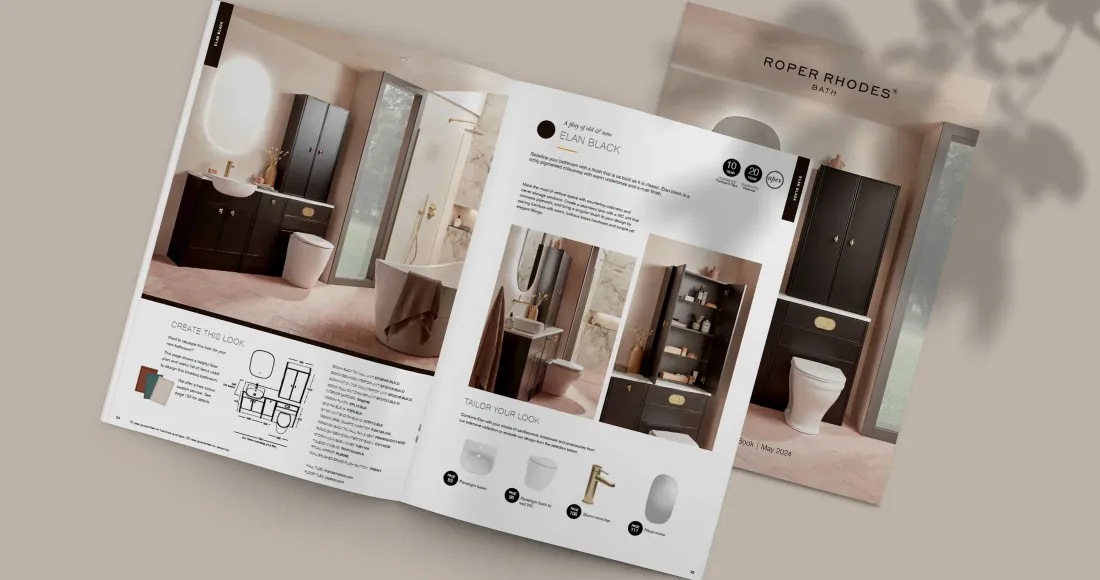- NEW
- Bathroom Furniture
- Baths
-
Basins & WCs
Basin & WC Styles
-
Taps
TAP TYPESTAP STYLES
- Showers
-
Lighting
Smart Lighting Solutions
-
Mirrors
-
Cabinets
Cabinet TypesCabinet Styles
-
Accessories
Accessory Types
-
Guides & Ideas
Inspiration
- NEW
- Bathroom Furniture
- Baths
-
Basins & WCs
Basin & WC Styles
-
Taps
TAP TYPESTAP STYLES
- Showers
-
Lighting
Smart Lighting Solutions
-
Mirrors
-
Cabinets
Cabinet TypesCabinet Styles
-
Accessories
Accessory Types
-
Guides & Ideas
Inspiration
Designing your Bathroom
Our comprehensive guide to designing your bathroom.
With an idea of how your bathroom will look, and a plan of how the furniture and sanitaryware will lay out, you can focus on the design. This will be the point where your plans start to take shape, and you can be more specific about your bathroom's final form.
This is part three of our four part guide, for more information on each stage please use our navigation banner below.
Traditional Bathroom Style
Characterised by Shaker-style furniture, Victorian-style washstands, claw-foot baths and moulded sanitaryware, there is now more variation than ever in traditional bathroom design. Dominated by timeless elements that transcend passing trends, here are a few fixtures commonly found in a traditional bathroom setting:
- Semi-Recessed Basins: Inspired by the Belfast sink, these basins offer a clean, heritage feel while providing easy countertop access.
- Shaker-Style Furniture: Framed doors, hand-painted finishes, and a focus on craftsmanship define this look.
- Claw Foot Baths: Once made from heavy cast iron, modern versions use lighter, more practical materials while retaining the same iconic silhouette.
- Exposed Brassware: External pipework and classic valve detailing lend an authentic period touch.
- Three Tap Designs: Low-profile tap sets with crosshead or porcelain inlays evoke early 20th-century charm.
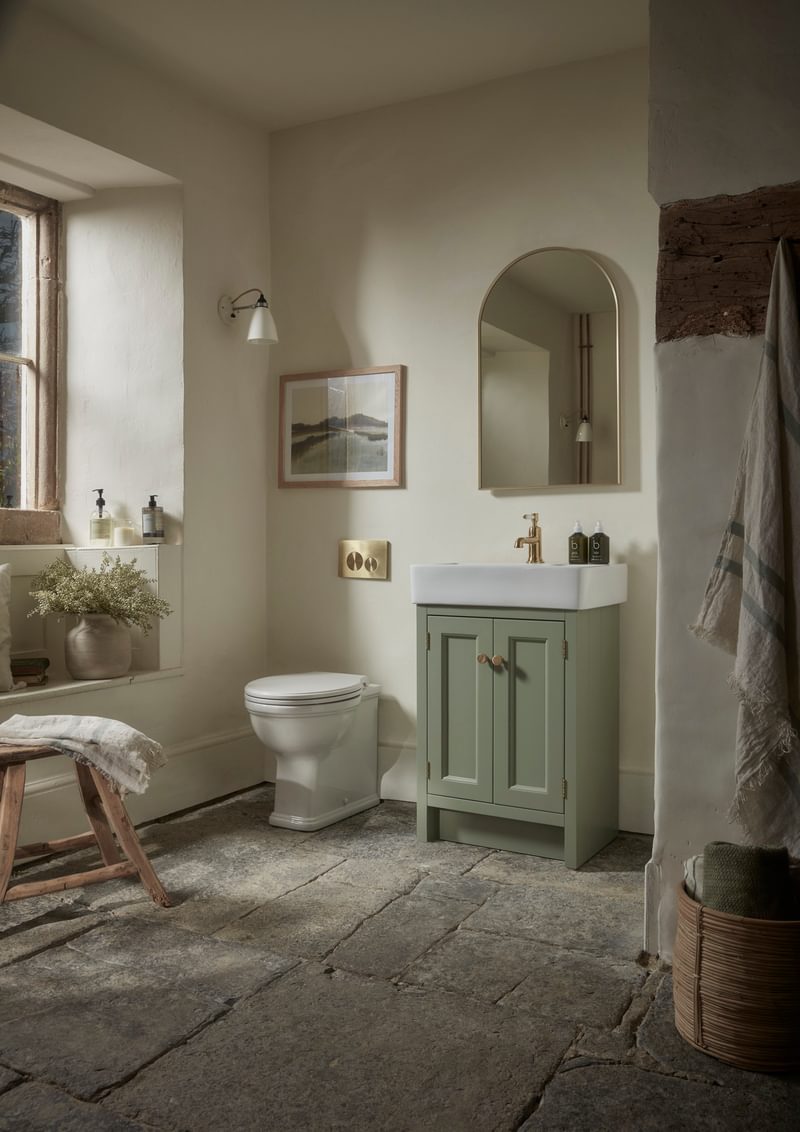

Contemporary Bathroom Style
Sleek, modern, and minimal—contemporary bathrooms are defined by their spa-like luxury and clever space usage. Consider these elements for a forward-looking, functional finish:
- Wall-Hung Fixtures: Vanities and toilets mounted to the wall create clean lines and maximise floor space, particularly effective in smaller bathrooms.
- Concealed Shower Systems: Brassware pipework hidden within the wall enhances the uncluttered, modern look while making cleaning easier.
- Basin Mixers: Streamlined single-spout taps are efficient and elegant, especially when paired with vessel sinks or countertop basins.
- Walk-In Showers: Prioritising open space, these are perfect for a minimal aesthetic—just be sure your flooring has proper drainage and slip resistance.
- Bathroom Tech: Integrated lighting, demister mirrors, and even Bluetooth-enabled cabinets all enhance daily functionality.


Practical Tips: Choosing Baths, Basins, Showers & Taps
Beyond style, practical considerations are key when selecting your core bathroom fixtures:
- Baths: A freestanding bath makes a statement in large bathrooms but requires clearance and stable flooring. In smaller rooms, a space-efficient shower-bath combo is often the best of both worlds.
- Basins: Choose based on space, plumbing, and usage. Countertop basins offer a striking modern look but need wall-mounted or tall mixer taps. Inset basins are better for families or high-traffic bathrooms.
- Showers: Always match your shower system to your home’s water pressure. Walk-in showers offer easy access, while enclosed systems help contain water in compact spaces.
- Taps: Wall-mounted taps look elegant but require planning. Deck-mounted versions are easier to install and come in a range of finishes—match them with your shower and accessories for a consistent look.
Once you have settled on a bathroom style, it's important to consider your paint and colour choices to help bring the look together cohesively. Again, would-be bathroom designers are often overwhelmed by choice when it comes to colour- follow and employ our simple tips to help you find your ideal bathroom colour scheme.
Bathroom Colour Palettes
Once you have settled on a bathroom style, it's important to consider your paint and colour choices to help bring the look together cohesively. Again, would-be bathroom designers are often overwhelmed by choice when it comes to colour- follow and employ our simple tips to help you find your ideal bathroom colour scheme.
Use a Colour Wheel
The colour wheel is widely used by interior designers and decorators, and is a visual representation of colours and their relationships to one another. The most common version of this wheel contains three primary colours and nine of their derivatives. Without becoming an expert, one of the safest and easiest colour wheel schemes is called 'Monochromatic' which is essentially selecting one colour and using different shades and tints of this single colour. Another simple scheme is called 'Complementary' and consists of selecting any two colours that are located opposite to each other on the colour wheel.
Borrow Colour
Unsure where to start? Borrow a colour scheme from elsewhere in your home. Take a walk around your home with a pen and paper and spend time in each room writing down the colours you have used and the ones you like the best. Using the same colour in different rooms will create consistency and rhythm and bring the styling of the house together.
Rule of Three
This simple rule states that around 60% of a room should be dominated by a primary colour, usually one that is light or neutral. This primary colour should be used on walls or other large surface areas. Next, 30% of the room is dedicated to a secondary colour that supports the dominant colour, and is usually a richer hue. Finally, 10% of the room should be dedicated to an accent colour, one that is bright and bold.
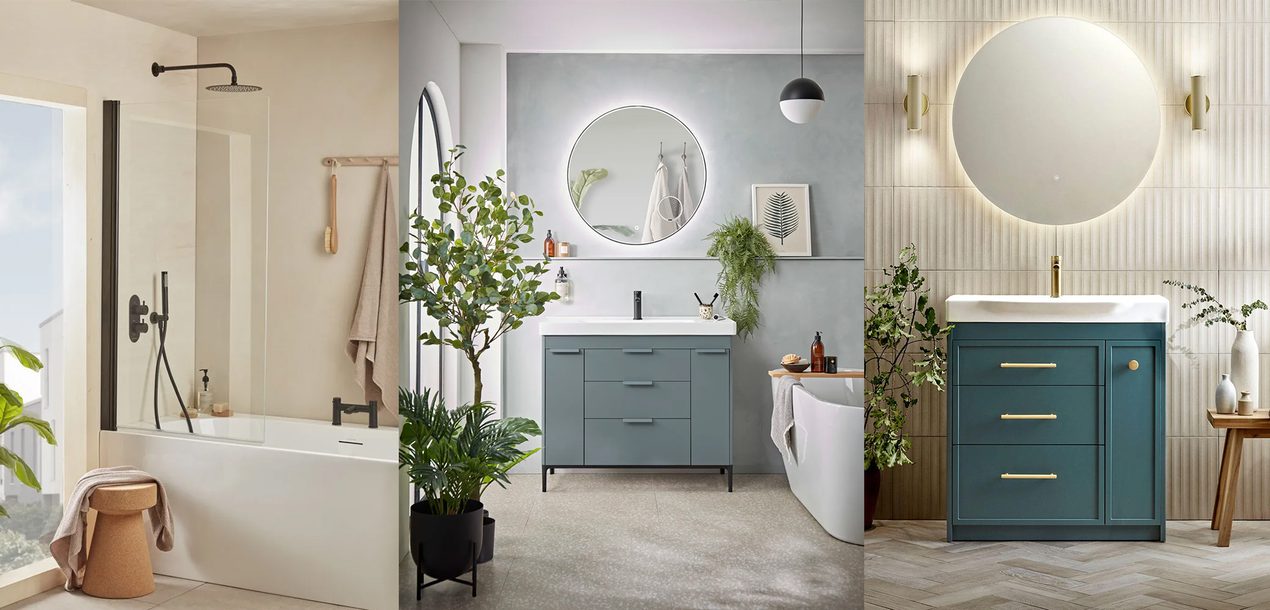
Bathroom Tiles
Probably the most popular of bathroom surfaces, tiles are a practical and affordable option with an ever-growing range of choice in shapes, colours and textures. When it comes to choosing bathroom tiles, it is important to understand the different types of materials and what they are most suited for. Here are the most common types of tiles used in bathrooms:
Ceramic Bathroom Tiles: Ceramic tiles are commonly made with red, brown or white clay that is fired in a kiln and finished with a durable glaze which carries the colour and pattern on the surface of the tile. The glazed surface of the tile makes the tile dense and non-porous which gives the characteristic of stain, fire and slip-resistant. Ceramic floor tiles are suitable for bathrooms that have a light to moderate traffic and can be relatively prone to wear and chipping.
Porcelain Bathroom Tiles: Porcelain tiles offer strong advantages when it comes to design, its strong nature allows endless ideas for interior and exterior applications. The full body porcelain tile carries colour and pattern through the entire thickness of the tile making them a much harder and denser tile, perfectly suited to high traffic bathrooms.
Stone Tiles: If you’re going for a more natural earthy feel, there is a wealth of options when it comes to natural stone tiles. Natural stone tiles come in an array of colours and styles; most commonly used are marble, limestone, travertine, slate and granite. It is important to note, that natural stone tiles are porous, which means they are prone to absorbing water, lubricants and stains that are left for long periods of time.
Tile Patterns: Each tile, dependant on shape and size can be arranged in a multitude of ways, the method of which will greatly contribute to the overall look of your finished bathroom surface. Here are a few examples of popular tile patterns:

